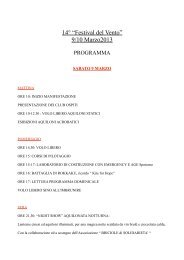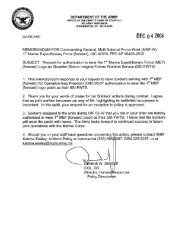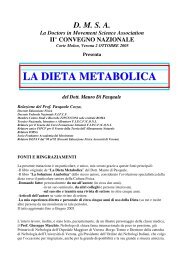Science vs. religion : what scientists really think - File PDF
Science vs. religion : what scientists really think - File PDF
Science vs. religion : what scientists really think - File PDF
Create successful ePaper yourself
Turn your PDF publications into a flip-book with our unique Google optimized e-Paper software.
The Voice of Faith 3746%ScientistsU.S. Population53%18%29% 31%22%once a month or more less than once a month neverFIGURE 3.2. Religious Attendance: Elite Scientists Compared to the U.S. Population.Sources: Religion Among Academic Scientists Survey 2005, General Social Survey 2006.While the religious group would be based on acceptance of certain beliefs, aMertonian scientific community would be based on the opposite: a relentlessquestioning of <strong>what</strong> is believed to be true.Merton’s model, though, is only one way of viewing science. And in practice,there are clearly many things that <strong>scientists</strong> no longer question. Few disputethe theory of evolution or the law of gravity, for example. And, as we’ll see,there are many <strong>scientists</strong> who live well in both communities.When we look at the numbers for attendance at religious services—a keypart of <strong>religion</strong>’s plausibility structure, or social community that reinforces itsnorms—there are stark differences between <strong>scientists</strong> and members of the generalpublic. About 18 percent of <strong>scientists</strong> attend religious services at least oncea month or more, compared to about 46 percent of those in the general population.Yet these numbers tell us very little about how the nearly 1 in 5 <strong>scientists</strong>who attend a house of worship at least monthly experience their particular religiouscommunities. Religious <strong>scientists</strong> live in a precarious state, because thework of science is constantly reminding them of the mundane natural world.As we’ve seen, however, religious <strong>scientists</strong> at elite schools have been exposedto and practice the best plausibility structures for science and are still committedto the plausibility structure of <strong>religion</strong>. If we are able to understand howthey live comfortably with this tension, their experience might be the perfectmodel for how science and <strong>religion</strong> can coexist as plausibility structures withinthe same person. It is to this interpretive task that we now turn.How Do They Live?The famous mid-twentieth-century Protestant theologian Reinhold Niebuhr(1892–1971) was perhaps best known for taking his faith beyond the doors ofthe church sanctuary. He consistently related and held in balance the importance
















